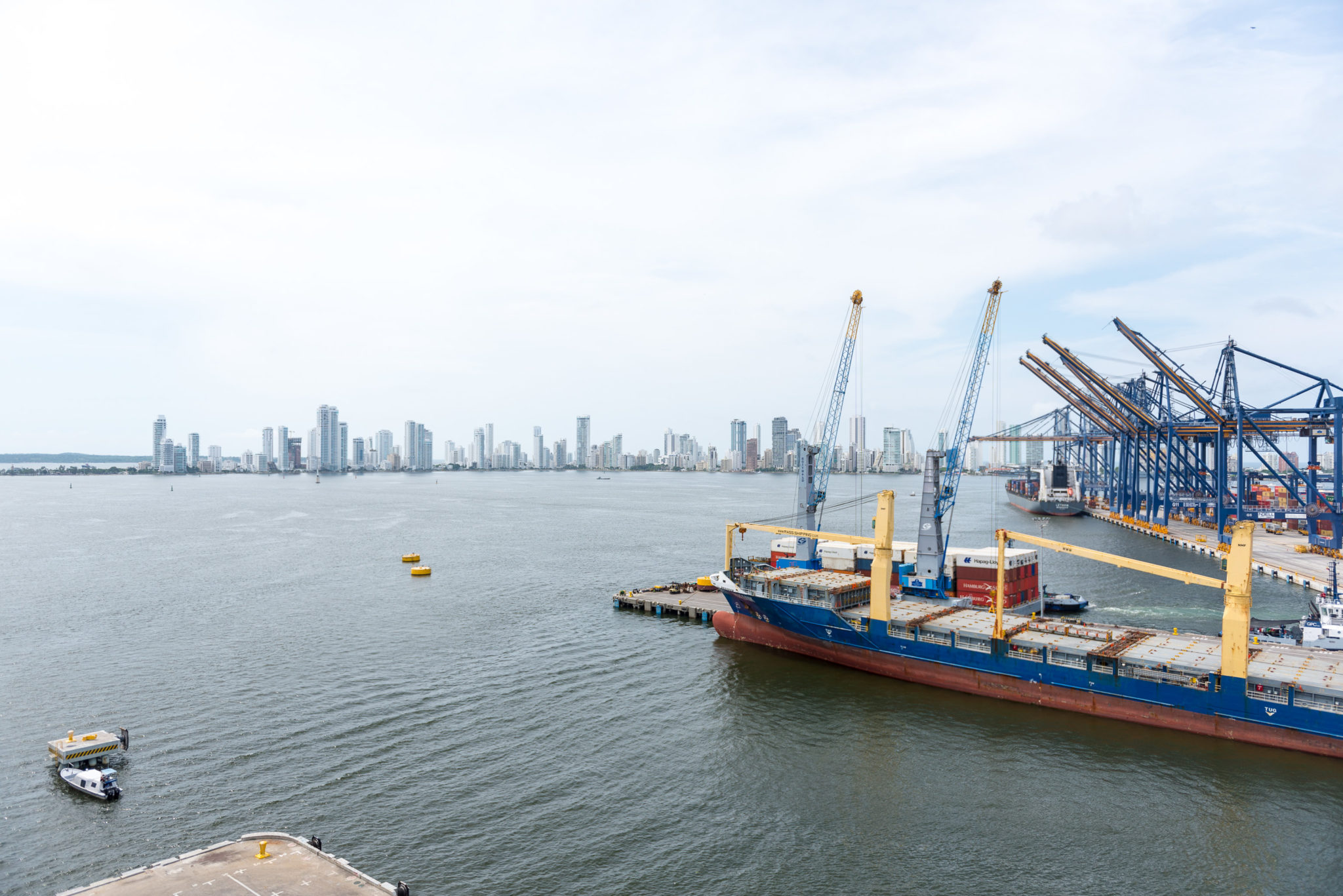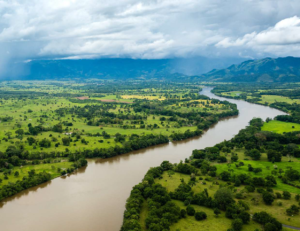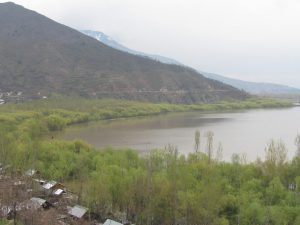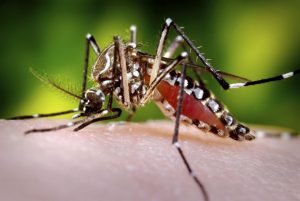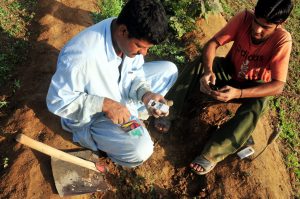This is the first article in a special series examining China’s role in promoting peaceful and sustainable development in Colombia in the context of the peace process
“We need to make peace with nature,” Luis Murillo, Colombia’s environment and sustainable development minister, told a crowd of around two thousand biodiversity specialists at last week’s International Congress for Conservation Biology (ICCB 2017) in the coastal city of Cartagena, the 28th such meeting of the scientific forum.
Colombia is at a historic juncture after ratifying a peace accord with guerrilla group the Revolutionary Armed Forces of Colombia (FARC) in November last year following five years of negotiations. The conflict with FARC lasted over fifty years and left a trail of 220,000 deaths, 60,000 missing, and seven million internally displaced persons, many from rural areas where land ownership was fiercely disputed.
“Nature was a silent victim of this conflict, and to recover these ecosystems we need research. Peace will allow us to mobilise many resources to promote development,” Murillo said. He added that agreements with the FARC have had major implications for conservation and it has allowed the government to reach an area with a great wealth of biodiversity “that we [Colombians] were previously not aware of”.
However, new risks now lie in these areas as other armed groups fill the vacuum created by FARC’s absence, researchers warn.
“The guerrilla groups occupied many areas, had territorial control, and ruled over agriculture and illegal activities. When they left these territories, the state was not immediately able to occupy these areas, which created a gap of governability,” Thomas Walschburger, science director at The Nature Conservancy, told Diálogo Chino.
Post-peace deal opportunities
Experts say that Colombia in a post-conflict scenario could become a country of opportunities for foreign investors eager to penetrate and exploit natural resources which had been inaccessible for decades.
“There will be a process to strengthen activities in petroleum, energy, and agribusiness development. But no one has an innovative version that incorporates the biodiversity potential of the country,” said Brigitte Baptiste, a biologist and director of the Alexander von Humboldt Biological Resources Research Institute.
The peace agreements have encouraged entrepreneurs, according to Li Nianping, the Chinese ambassador to Colombia. In May this year he estimated that a wave of investments totalling around US$ 10 billion would arrive in the next few years.
China has established itself as Colombia’s second largest trading partner, and now wants to become involved in the post-peace deal reconstruction of the country.
In March this year, investment promotion agency ProColombia held a forum in Beijing in an attempt to give a new boost to economic development. It focused on infrastructure, energy, agribusiness, and tourism.
In 2015, there were only 20 Chinese companies operating in Colombia. Today, they number 70. To facilitate the entry of Chinese capital, the Colombian government has decreased taxes, as ProColombia director Alejandro Valencia told the press during a business trip to Beijing. Environmental protection and research also figure among the goals that the Colombian government wants to encourage with resources from overseas.
For Baptiste, foreign investment is welcome “from China or from anywhere else”. But she hopes Colombia will prioritise investments that have safeguards, quality controls, and a clear concern for the environment.
“This is not the case in many Chinese cooperation agencies,” Baptiste says. She argues that Chinese companies are gaining political ground with their action and capital, without too much interest in the subject of the environment.
Colombia needs a clear idea of the level of investment such companies are willing to make for good biodiversity management. Baptiste said: “If Colombia reduces its standards, without a doubt we will have poor quality investments that put the future of the country at risk.”
Chinese allies?
Baptiste says Chinese investors can be allies with the scientific community in environmental conservation: “Environmental management in China is very innovative and top-quality. We would ask them to apply the same standards they have in their country here.”
When asked by Diálogo Chino how China could help Colombia promote sustainable development in the context of the signing of the peace agreements, Murillo stated that there are “many environmentally friendly investment opportunities.”
The minister said some 25 and 30 million hectares of land previously used for agriculture could be converted into forests. “China may be interested in this topic. We could have a food production chain without deforestation in Colombia that creates jobs for local communities, and even strategic alliances between the government, the private sector, and communities,” Murillo said.
“In 2010, we had 13 million hectares [of forest] in 59 protected areas. Our goal is to double this to 26 million protected hectares in the coming years,” he announced. Murillo also hopes that China will be interested in investing in the carbon credits market.
The country recently created a carbon tax and payment system for ecosystem services. Murillo hopes that this will stimulate investments in local projects for environmental conservation. According to projections from the National Planning Department, the country expects this initiative will help generate approximately 7 billion Colombian pesos (US$2.3 million) per year.
“We will also submit a draft bill on climate change next week to create a carbon market in Colombia. The idea is to receive contributions from the international private sector,” Murillo said.
The minister added that he has halted all requests relating to mining and petroleum extraction in the Amazon basin. Murillo said: “These activities are prohibited in protected areas. Some of the areas we set aside, like Parque de Los Nevados and the open lands in [the central department of] Tolima, as well as areas of the Pacific, are some of the most attractive areas for mining companies and need to have mining prohibited.”
Murillo added that mining must be sustainable and responsible, but this type of activity attracts settlers to the forest and drives the expansion of the agricultural frontier. “We cannot fight against this now if we do not halt exploitation in these areas,” he said.
Promises amidst obstacles
In spite of the minister’s proclamations, there are signs that a series of obstacles to environmental protection remain. For example, the rate of deforestation in Colombia soared 44% in 2016 compared to the previous year, according to a recent announcement from the Institute of Hydrology, Meteorology and Environmental Studies (IDEAM).
Last year, 178,597 hectares of forest were destroyed, the study said. The situation is worse in the Colombian Amazon, where 34% of the deforestation registered in 2016 was concentrated in the states of Putumayo, Caquetá, Meta, and Guaviare. The main drivers of forest loss are extensive livestock ranching, coca cultivation, illegal mining, forest fires, and road infrastructure, the report said.
Furthermore, the situation facing those defending the environment is becoming increasingly lethal. Colombia witnessed 37 killings of environmental and land activists last year, a record high according to recently publsihed research by UK NGO global witness.
“We need to protect human right defenders and environmental activists,” Murillo said, adding that the government plans to allocate mountain- and forest-based security personnel to improving security in rural areas.
At the 2015 Paris climate conference, the Colombian government pledged to bring its gross rate of deforestation in the Amazon to zero by 2020. In the wake of this widely acclaimed goal, countries like Germany, the United Kingdom, and Norway declared that they would invest US$100 million, albeit gradually as the country proves it is battling deforestation.
However, projections hit a snag on July 22, when Colombia’s planned 2018 budget was leaked to the press. The ministry of the environment is expected to have 60% of its budget cut – from 632 billion Colombian pesos (US$208 million) to 232 billion pesos (US$ 76 million). Divisions including national parks, IDEAM, and the Humboldt Institute stand to experience the most severe cuts, at around a third of their total budgets.
Colombia’s congress is currently debating the 2018 budget, which must be approved by the end of October.
